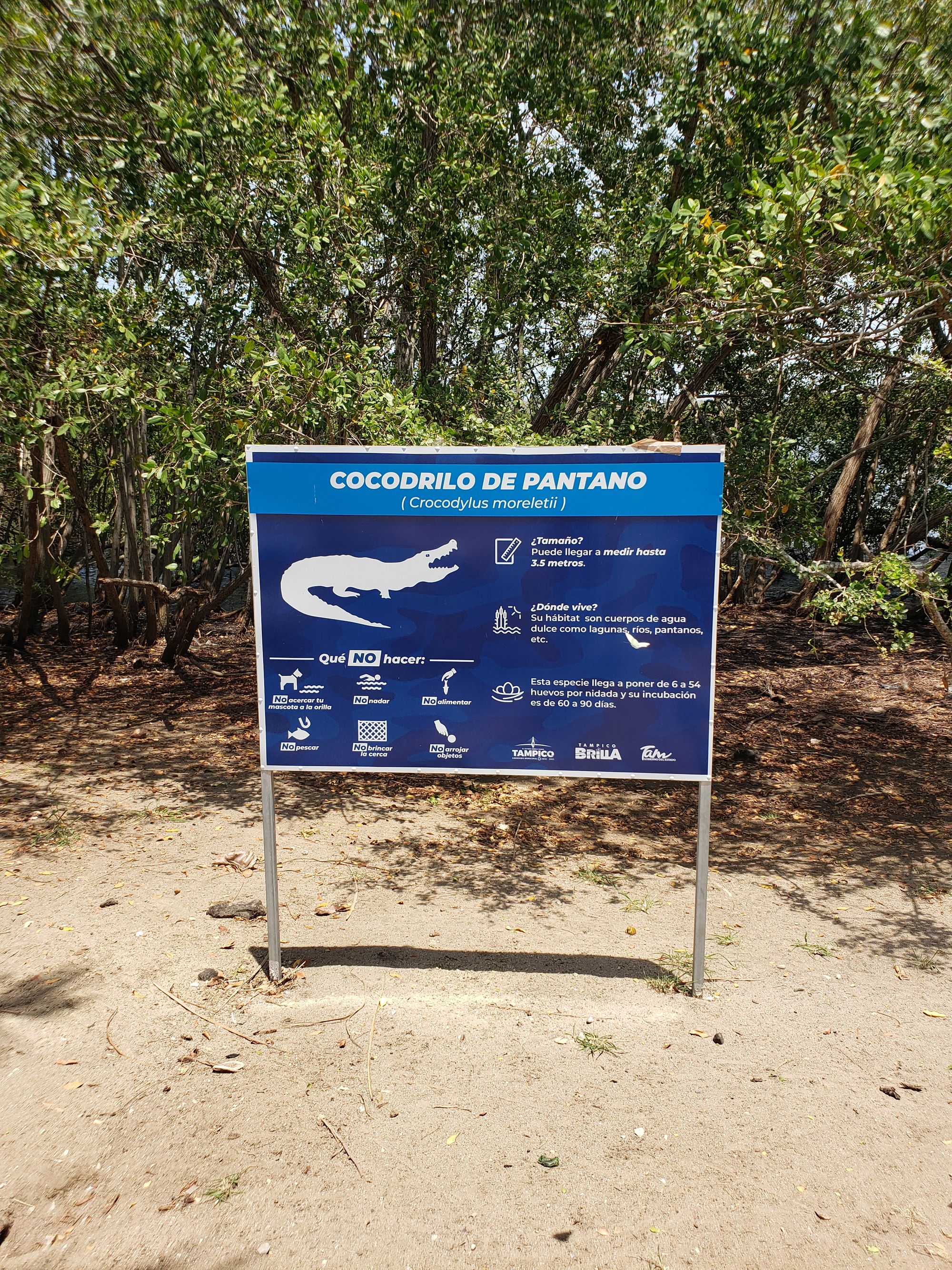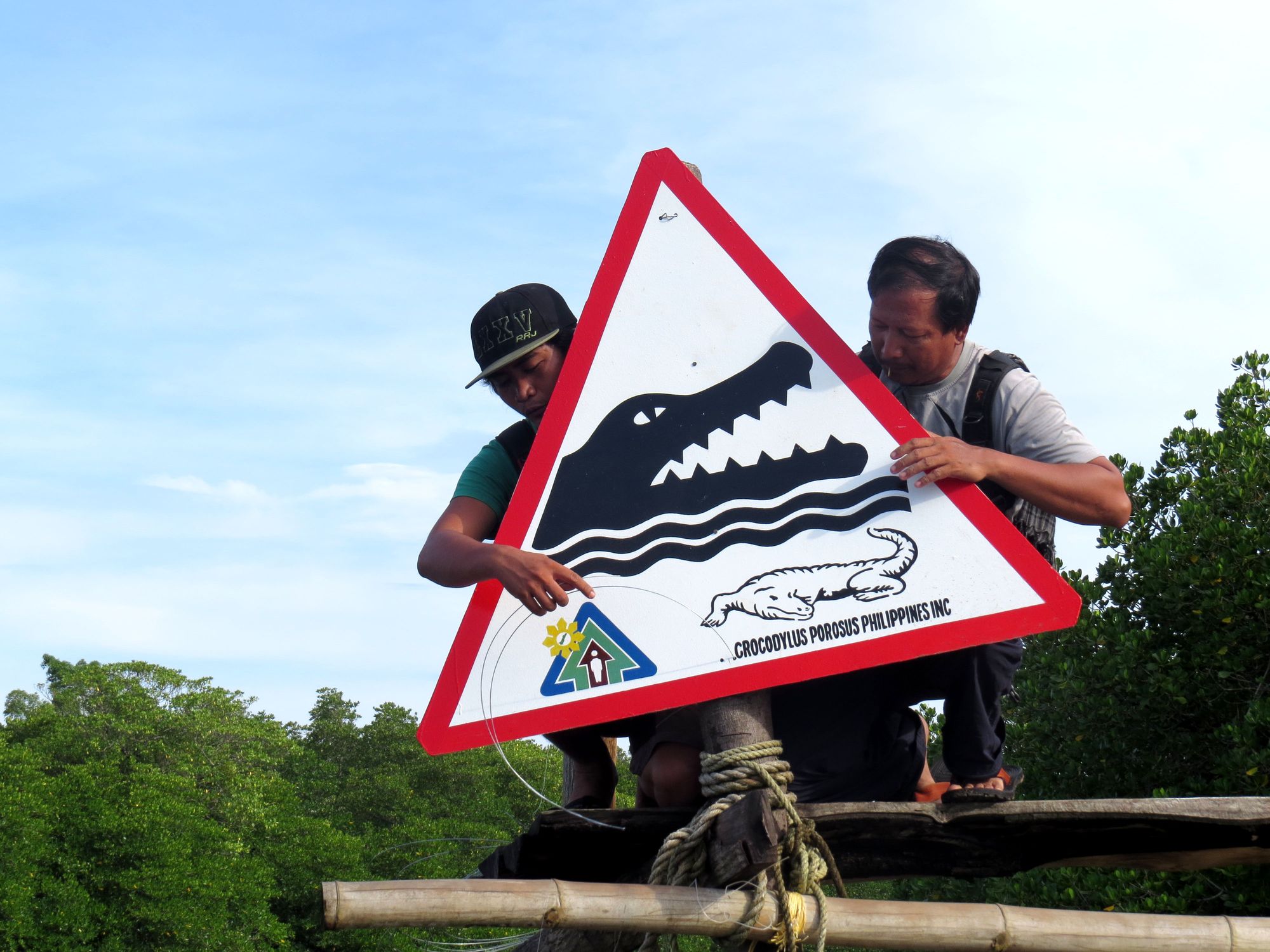Crocodilian Warning Signs
These are 'warning signs' that are placed in areas of crocodilian habitat, particularly where attacks have occurred in the past. Such signs have proven useful in some areas, though people sometimes disregard the signs as scare tactics or ignore them entirely. Whether such warnings are heeded may depend on cultural and economic factors. In some areas the need for access to freshwater is likely to surpass the risks associated with obtaining the water. Even so, they can be useful. Importantly, it may be useful to use more intimidating photos of crocodiles in the warning signs. In Sri Lanka, for example, reports of attacks along the Nilwala River decreased following the erection of warning signs with a "scary" looking very large saltwater crocodile (Crocodylus porosus) on them, replacing the previous signs that had a rather non-threatening, sub-adult American crocodile (C. acutus) on them. While we cannot be certain this played a role in attack reductions (or if attacks went unreported), it is interesting nonetheless. The following are some examples of crocodilian warning signs from around the world.






